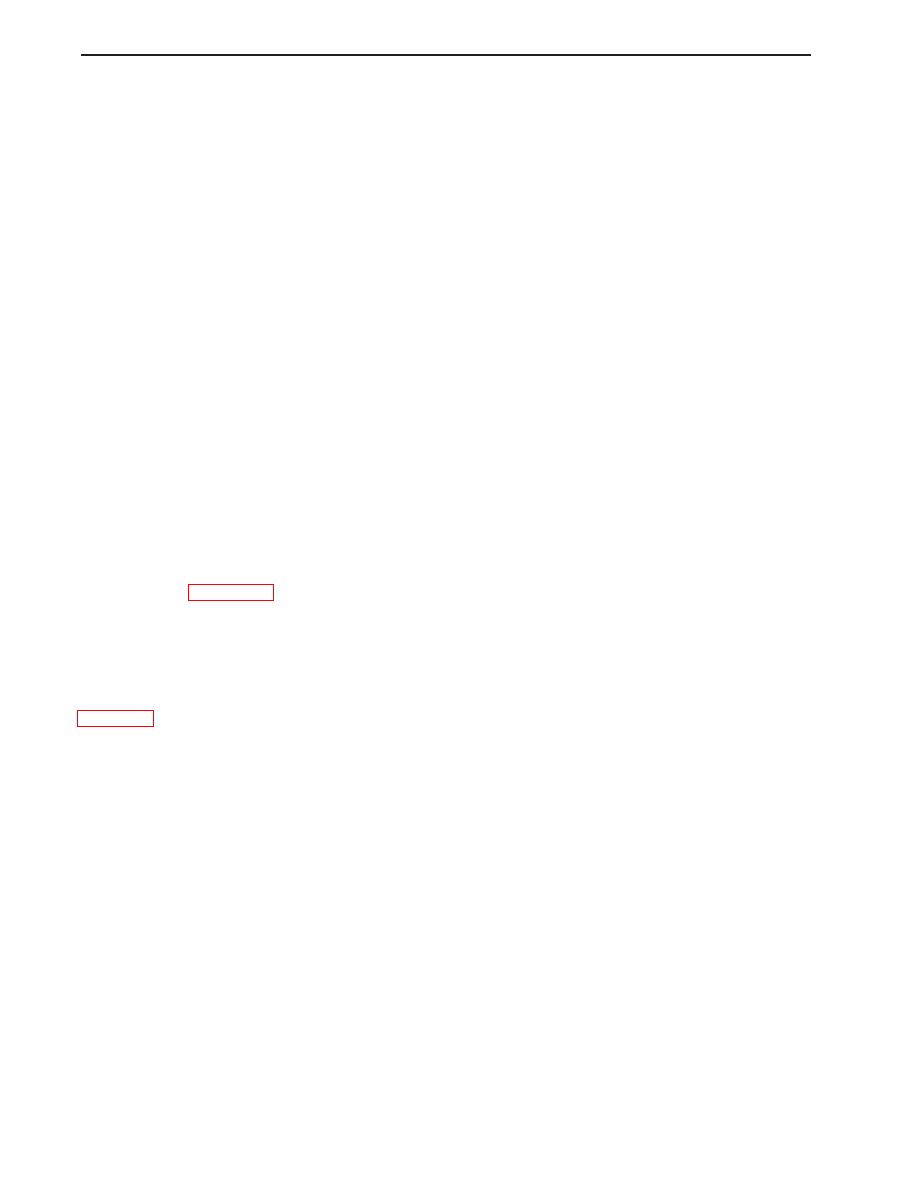
| Tweet |

Custom Search
|
|

|
||
 TM 55-1905-242-14
0006 00
Pump Check Valve
Each engine-driven hydraulic pump has a pump check valve installed in its discharge piping. This pump check valve
prevents one pump from backfeeding into the other during conditions of pump imbalance. This unbalanced condition occurs
when only one propulsion engine is running or when the propulsion engines are operating at greatly different speeds.
Suction Check Valve
The suction check valve permits the helm unit to draw hydraulic oil directly from the reservoir when the engine-driven
hydraulic pumps are not operating. Under this condition the helm unit acts as a pump. When acting as a pump, the helm unit
uses port A (normally supplied by the engine-driven hydraulic pump) as the suction port and draws hydraulic oil from the
reservoir through the suction check valve. When the engine-driven hydraulic pumps are supplying pressure to port A, the
suction check valve prevents pump flow from returning to the reservoir (bypassing the helm unit).
Counterbalance Valve
Under most conditions the steering cylinders act to initiate rudder movement. But under certain conditions, such as when the
rudder is returning to midship following a turn, the steering cylinders must halt or slow rudder movement. Without counter-
balance valves in the system, the steering cylinders would have a tendency to move uncontrollably when halting or slowing
rudder movement. The counterbalance valves prevent this uncontrolled movement by permitting cylinder movement only
when pressure is present on the return side of the cylinder. This return side pressure prevents uncontrolled cylinder move-
ment and maintains helm control under all conditions.
Isolation Valve
Four isolation valves, two port and two starboard, are installed in the hydraulic steering system to permit isolation of a
damaged steering cylinder. The isolation valves are open during normal operation. By properly positioning the isolation
valves and the bypass valves, the LCM-8 Mod 2 may be steered in emergency conditions. Positioning of the valves for this
use is discussed in WP 0030 00. The isolation valves may also be used to isolate a cylinder for service.
Bypass Valve
Four bypass valves, two port and two starboard, are installed in the hydraulic steering system to permit emergency steering.
The bypass valves are closed during normal operation. By properly positioning the bypass valves, the LCM-8 Mod 2 may
be steered in emergency conditions with the emergency tiller. Positioning of the valves for this use is discussed in
Suction Valve
Two suction valves, one for each pump, are mounted directly below the hydraulic reservoir. The suction valves may be
closed to allow servicing of the engine-driven pumps. At all other times the suction valves must remain open.
Drain Valve
A drain valve is located in the bottom of the reservoir. This valve permits draining of the reservoir for service. This valve
is closed and its outlet plugged during normal operation.
Return Filter
A single, 10-micron return filter is installed in the oil return line. This filter removes particulate contaminants from the
system's return oil before it enters the reservoir. The filter is of the disposable, spin-on type.
Suction Strainer
Each suction valve, one per engine-driven hydraulic pump, is fitted with a suction strainer. These strainers, mounted inside
the reservoir, remove large particulate contamination from the hydraulic oil before it enters the engine-driven hydraulic
pumps.
0006 00-6
|
||
 |
||